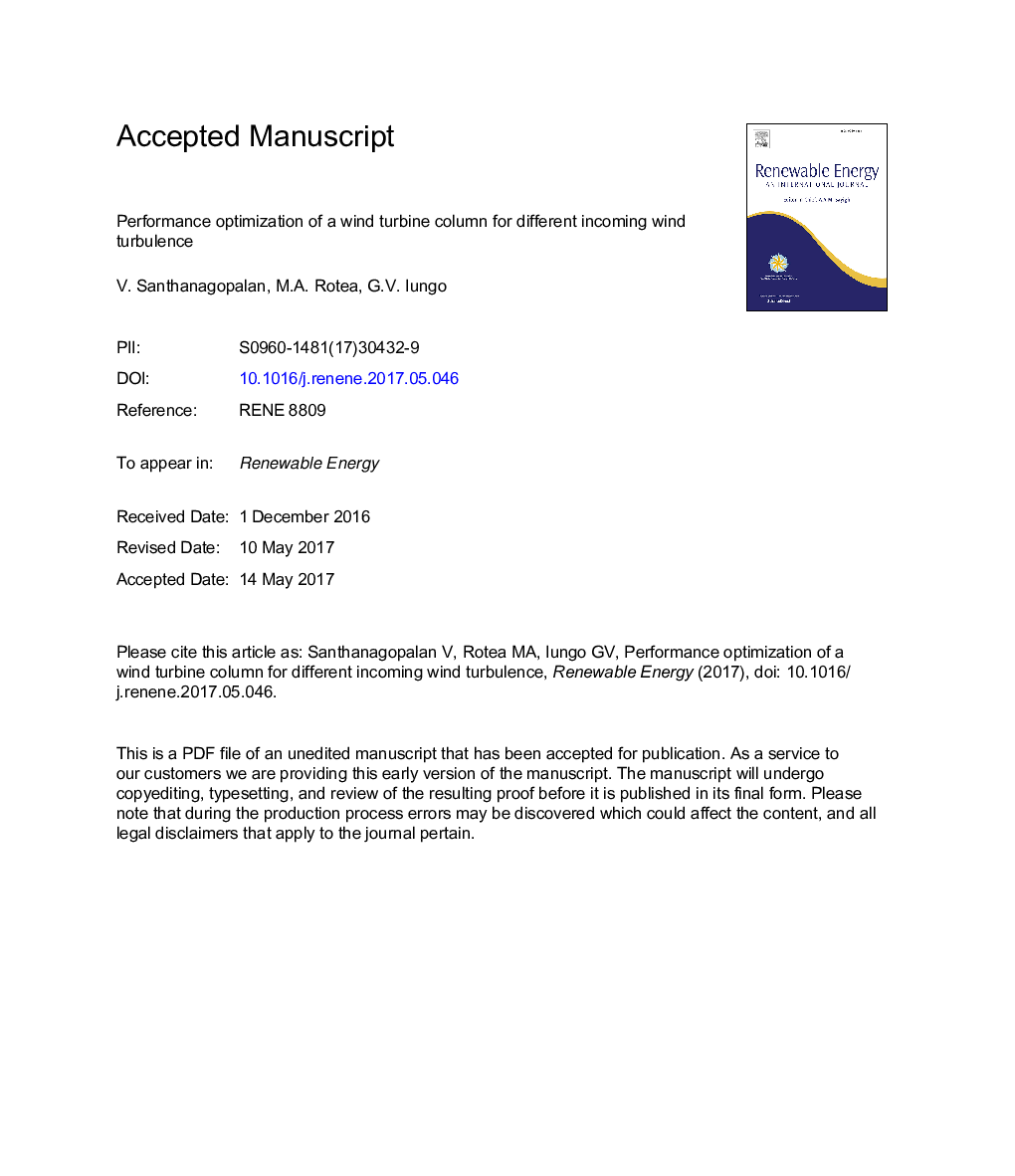| Article ID | Journal | Published Year | Pages | File Type |
|---|---|---|---|---|
| 6765141 | Renewable Energy | 2018 | 37 Pages |
Abstract
Optimization of the performance for a wind turbine column is performed by coupling a RANS solver for prediction of wind turbine wakes and dynamic programming. Downstream evolution of wind turbine wakes is simulated with low computational cost comparable to that of wake engineering models, but with improved accuracy and capability to simulate different incoming wind turbulence. Dynamic programming is used to estimate optimal tip speed ratio (TSR) and streamwise spacing of the turbines by using a mixed-objective performance index consisting of total power production from the entire turbine array with the penalty of the average turbulence intensity impacting over the rotor discs. The penalty coefficient, representing the economic impact of fatigue loads as ratio of wind energy revenue, is varied in order to mimic different economic periods. The results suggest that a general strategy for wind farm optimization should consist in coupling design performed through spacing optimization and using a relatively low penalty coefficient for the fatigue loads, while wind turbine operations are optimized by varying TSR.
Related Topics
Physical Sciences and Engineering
Energy
Renewable Energy, Sustainability and the Environment
Authors
V. Santhanagopalan, M.A. Rotea, G.V. Iungo,
